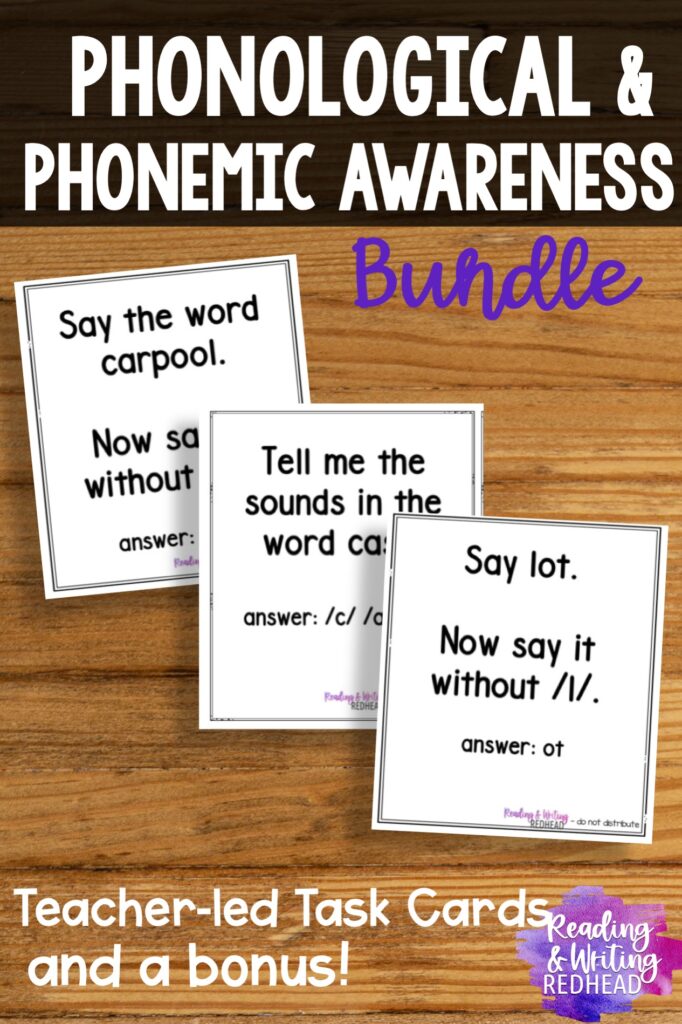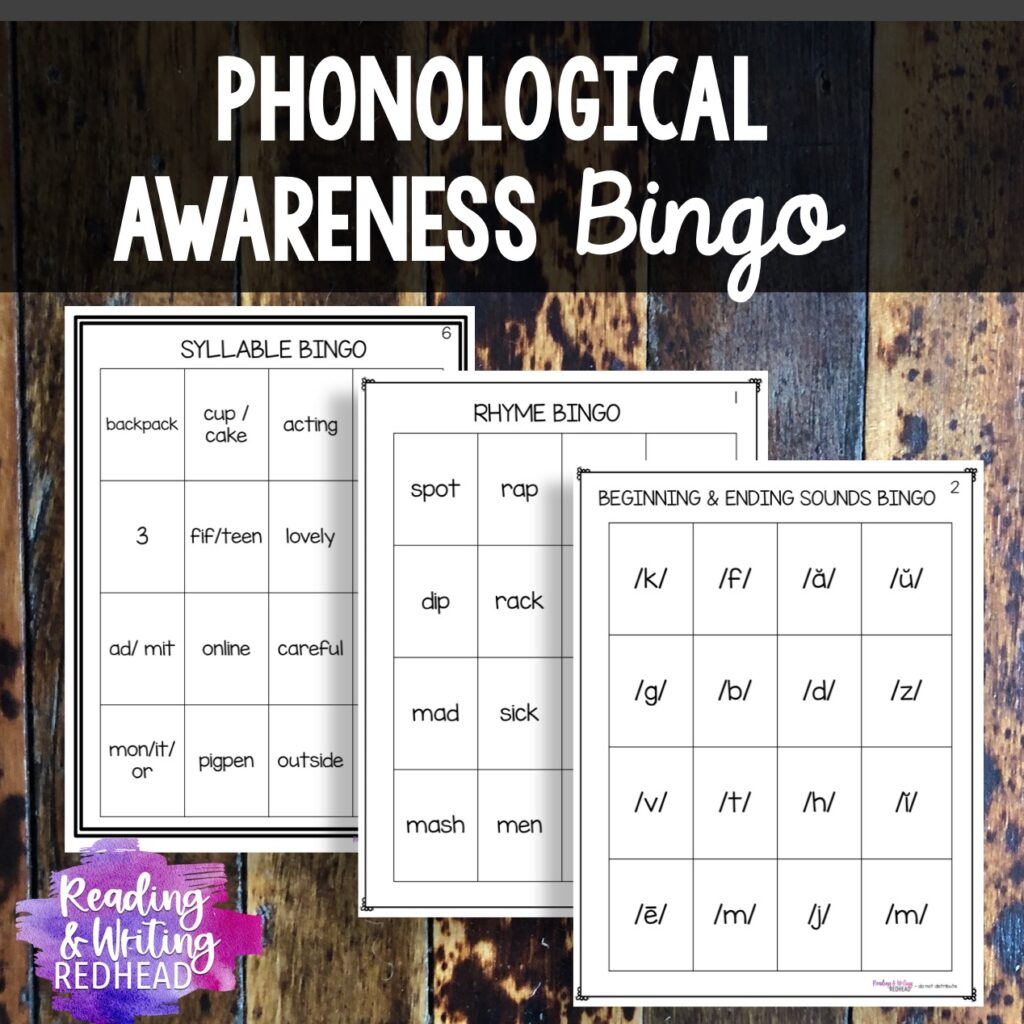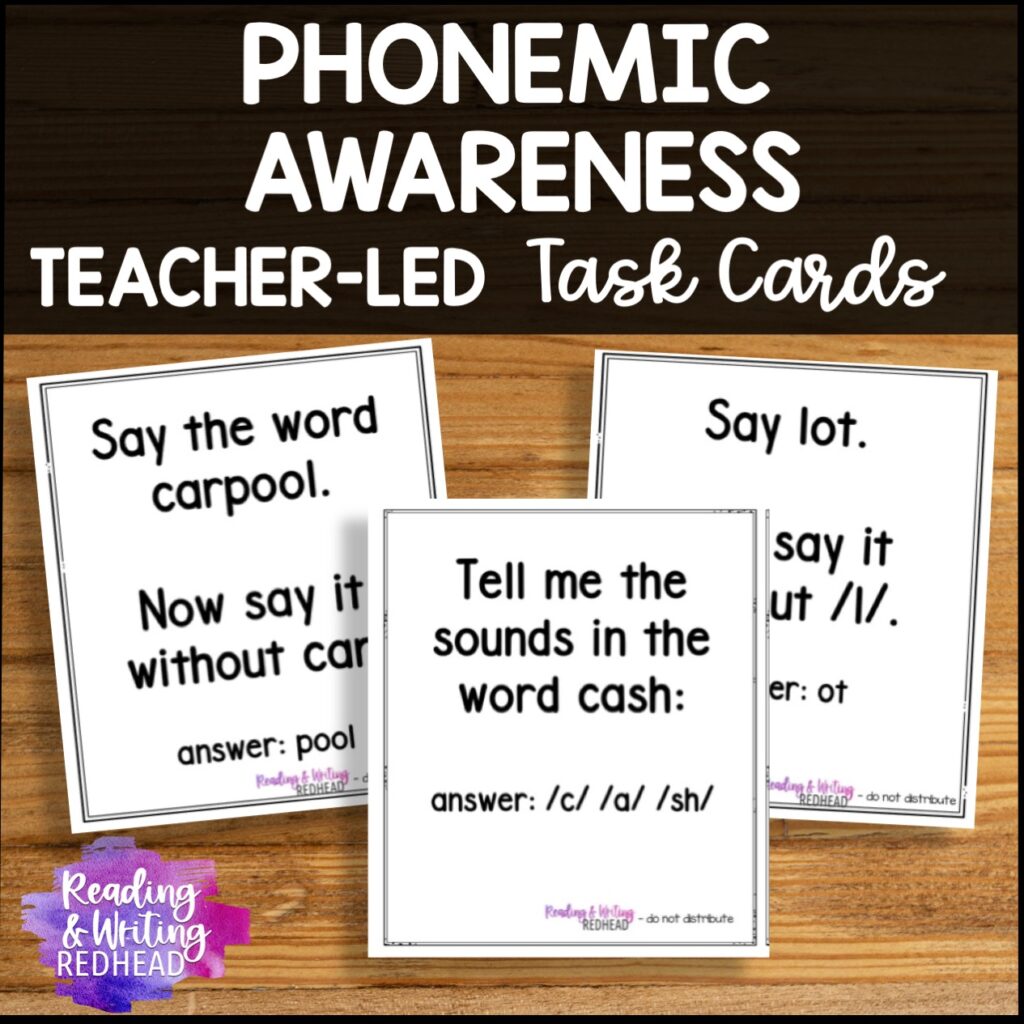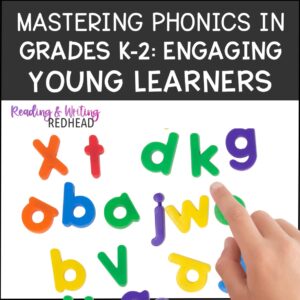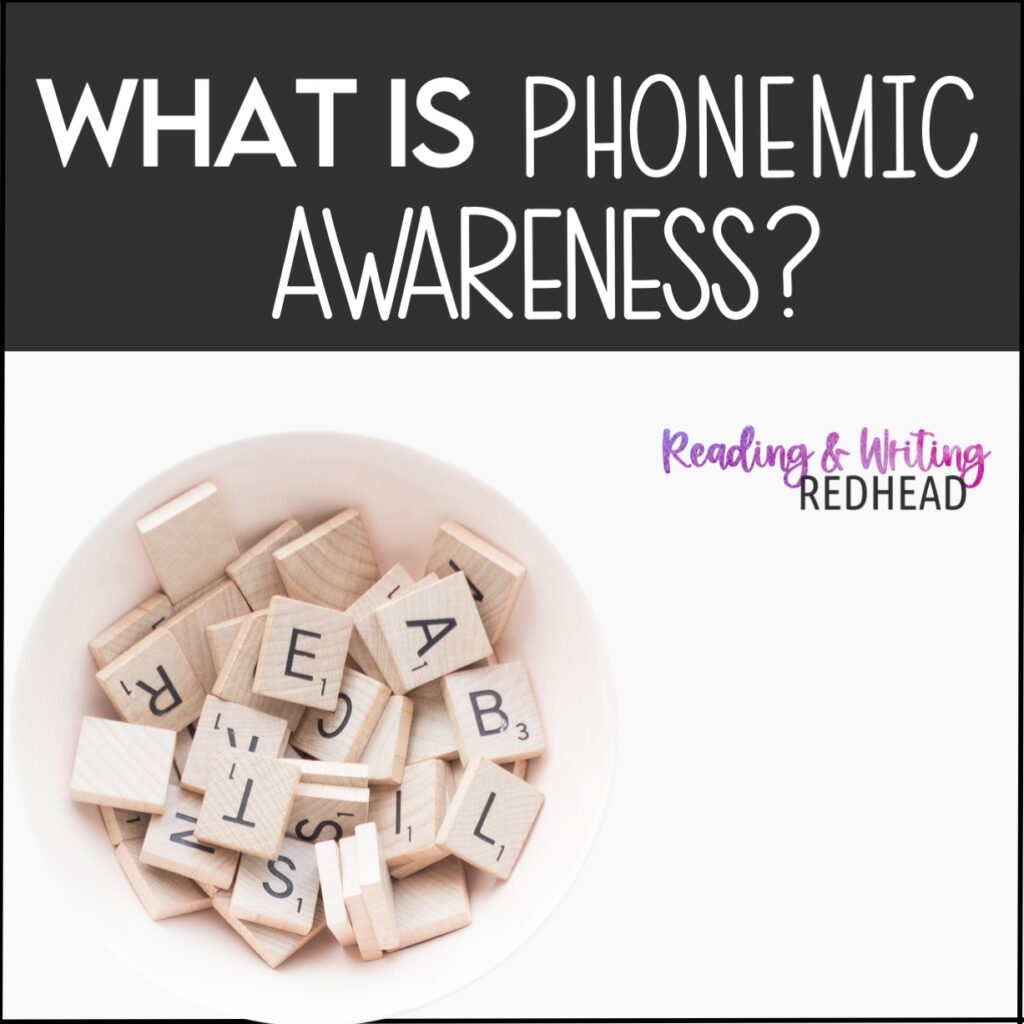
So…what is phonemic awareness? Science of reading talk is everywhere, and last time on the blog, I posted about phonological awareness, so let’s go under that umbrella (remember the analogy?) and get the details on Phonemic Awareness!
Well, I am here to help!
Phonemic Awareness is…
According to the University Oregon (aka the folks who brought us DIBELS), phonemic awareness is (I paraphrased ):
- hearing and manipulating the sounds and understanding that spoken words consist of these sounds (phonemes)
- essential to learning to read
- important for mapping speech to print. Understanding that “mop” and “might” begin with the same sound and being able to blend the sounds /rrraaaatttt/ into the word “rat” (for example), students will be more likely to succeed in connecting sounds with their written symbols or blending sounds to make a word.
- essential to learning to read in an alphabetic writing system.
- a strong predictor of early reading success.
Important to remember: phonemic awareness only involves sounds and not written letters or words (that is phonics).
Check out these teacher led Phonemic Awareness task cards bundle that will support your students!
Keep reading to see some examples of phonemic awareness activities!
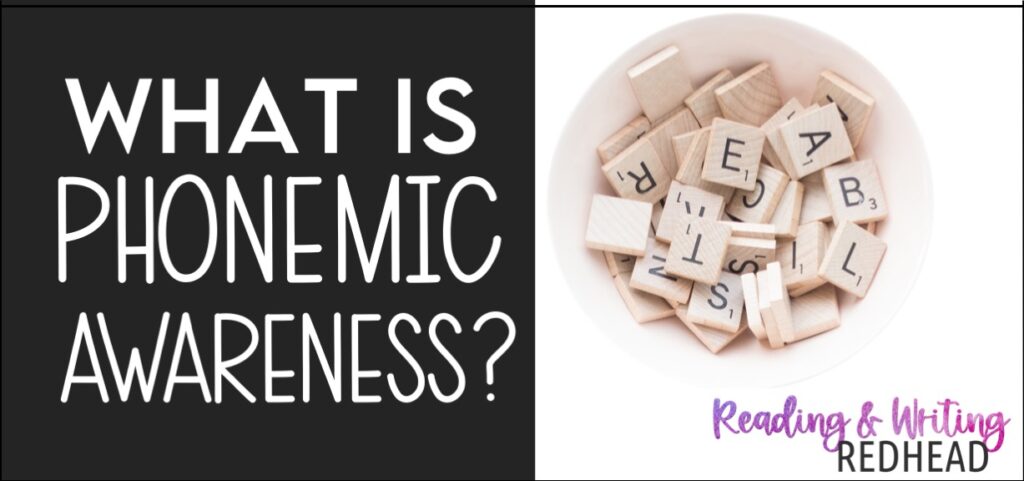
Examples of Phonemic Awareness Activities
Here are just a few examples:
- Blending phonemes – Hearing someone say sounds and putting them together to determine what the words, ie. What word is this: /c/ /a/ /p/ ? Cap.
- Segmenting – This is basically the opposite of blending – hearing a word and being able to say the sounds, ie. What are the sounds in cap? /c/ /a/ /p/
- Isolating Initial sounds – Identifying the first sound of a word, ie. What is the first sound in cap? /c/
- Isolating Medial sounds – identifying the middle sound of a word (for beginners, use CVC words with short medial vowels) ie. What is the middle sound in cap? /a/
- Isolating final sounds – naming the final sound in a word, ie. what is the last sound in cap? /p/
- Deleting and adding phonemes – taking a word and adding or deleting a sound from it , like “What is cup without /c/?”
- Substituting phonemes – replacing a phoneme in a word with a different one, such as “Say cup. Now say cup , but instead of /c/, say /p/” and the students should say “pup”
- Onset and rime – asking students to break a word into onset and rime, like cup into /c/ /up/
Phonemic Awareness Bingo is a fun way to ALSO practice phonemic awareness skills with your students ! Click here or on the image to get more info!
Fun Ways to Engage Kids during Phonemic Awareness Activities
- Incorporate movement – for example have everyone do a lunge, squat, etc. for each sound (phoneme) of a word, or for each sound switch standing on one leg to the other.
- Use plastic eggs or small opaque bags. In each, put a small item that students will segment – ie. if a toy boat is in one, say “What are the sounds of boat?”
- Try I Spy a Word – like regular I Spy but instead of a “thing” say “I spy a word that starts with /m/ “(maybe it’s a marker) or “I spy a word that starts with /s/ (stapler).
- Use manipulatives for each sound like bingo chips, pom poms, cotton puffs, place value ones cubes, etc. For each sound in a word students can push one up as they say each sound.
This is the original phonemic awareness task cards kit and is not in the bundle if you want to start out small. Find out more here.
SAVE ME to refer to later by pinning the image below!
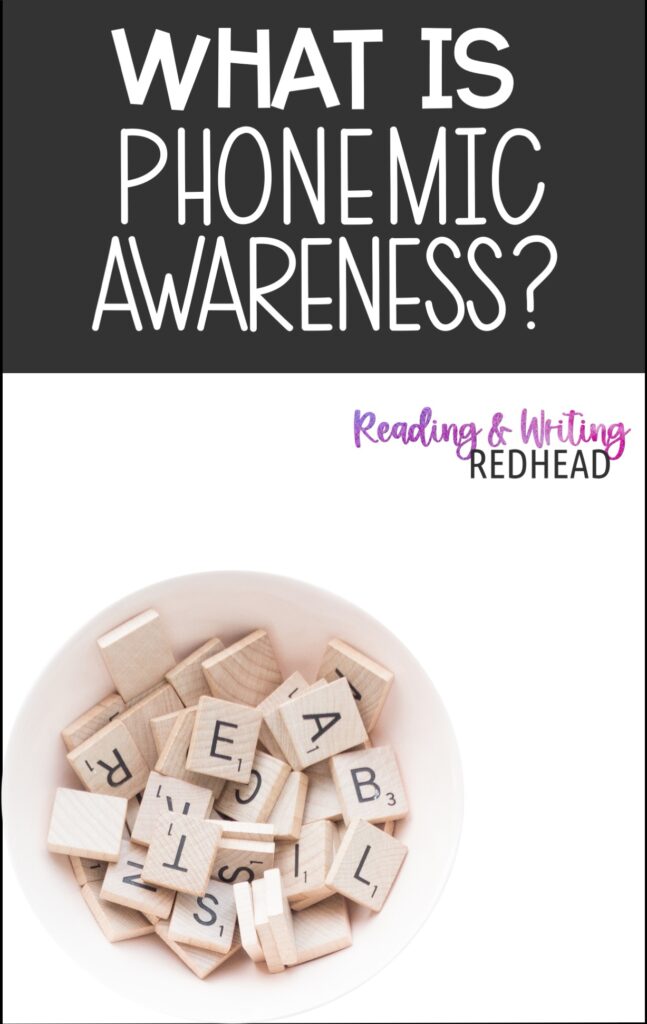
You might also be interested in these blog posts:
- What is Phonological Awareness?
- Reading Intervention: 10 Phonics Tips
- 8 Ways to Use Pop Its to Engage Learners
- Reading Intervention: Sounding out Words
- Reading Intervention all in one Place
- 7 Ways to Practice CVC Words


